ChinaFile Recommends
10.16.17Is Xi a Threat to Foreign Businesses in China?
Bloomberg
In a speech at this year’s annual meeting of the World Economic Forum in Davos, Xi Jinping said choosing protectionism was akin to “locking yourself in a dark room.” But his rhetoric doesn’t square with reality, multinationals say.
ChinaFile Recommends
09.20.17Trump’s Threats Loom as China Weighs Opening to Wall Street, Tesla
Bloomberg
Coincidence or not, China appears set to ease restrictions on foreign automakers and banks amid sustained pressure from U.S. President Donald Trump to open up its economy.
ChinaFile Recommends
09.12.17China Just Reversed Two Policies Designed to Keep the Yuan from Sliding
Business Insider
China is reversing course and loosening some financial restrictions after the yuan’s appreciation in 2017.
ChinaFile Recommends
02.23.17China Shakes up Top Economic Team ahead of Major Power Shuffle
Wall Street Journal
President Xi Jinping is shaking up his economic team ahead of a major power shuffle as China battles rising financial risks at home and friction with its trading partners.
ChinaFile Recommends
02.21.17China Is Warning Lotte Group against Letting a Korean Golf Course Become a Missile Defense Site
Quartz
China’s has a new target amid its ongoing economic retaliation against South Korea—the country’s fifth-biggest conglomerate
Media
08.25.16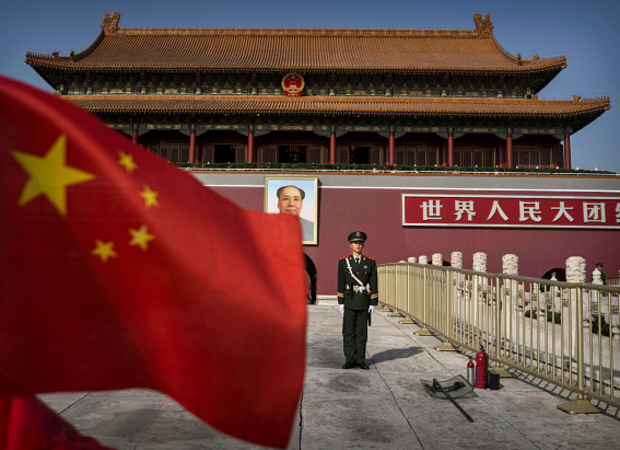
China Analysts Should Talk to Each Other, Not at Each Other
On August 12, the International Monetary Fund (IMF) issued its annual report card on China’s economy and gave the country mixed grades, finding that its “economic transition will continue to be complex, challenging, and potentially bumpy.” In...
Media
03.04.16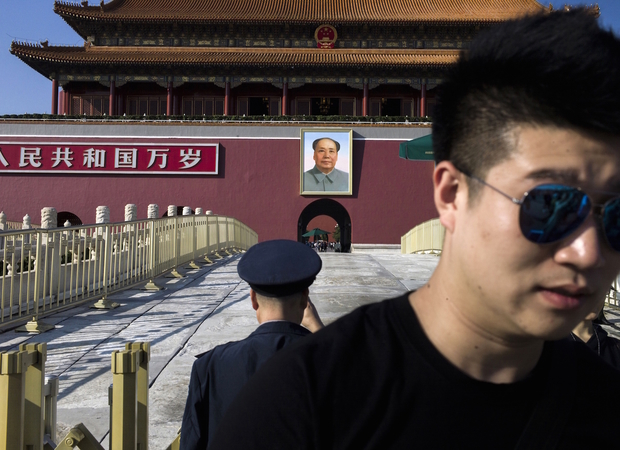
China’s Coming Ideological Wars
For most Chinese, the 1990s were a period of intense material pragmatism. Economic development was the paramount social and political concern, while the various state ideologies that had guided policy during the initial decades of the People’s...
ChinaFile Recommends
12.01.15Can Beijing Sell Silk Road as a Marshall Plan Against Terror?
Wall Street Journal
China needs West’s buy-in on stabilizing effects of its Silk Road project.
Media
11.13.15
The Real Reason for China’s Two-Child Policy: Millions of New Consumers
Two fictitious Chinese brothers are born in Tuanjiehu Maternity Hospital in the Chinese capital of Beijing. Let’s say the first was born already, in late 2015; his parents nickname him Laoda, meaning “oldest child.” That’s because they have hopes...
Reports
06.01.15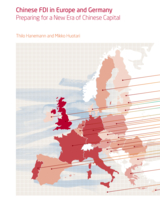
Chinese FDI in Europe and Germany
Mercator Institute for China Studies
The authors have—on the basis of a unique transaction dataset—analyzed the newest trends of Chinese direct investment in Germany and the E.U. The study is able to clearly establish that the new wave of Chinese investment offers exceptional...
ChinaFile Recommends
06.03.14Finally, One Analyst Believes China Is Improving
Forbes
In recent years, an upbeat note on the Chinese economy has been hard to find. Step forward Nomura, which on June 3 raised its GDP forecast for the second quarter from 7.1% to 7.4% and its full year forecast from 7.4% to 7.5%.
ChinaFile Recommends
11.13.13China’s Communists Want Unattainable Goal of Affluence Without Freedom
Telegraph
The upcoming meetings on economic reform are a chance for China to break free of the “middle income trap”, the fate of countless states in Latin America and around the world which all failed to make the switch in time to a grown-up growth...
ChinaFile Recommends
10.25.13Can China Keep Growing at 8% Annually?
Forbes
China’s economy grew by 7.8% in the third quarter, its fastest pace since the end of 2012. For most world leaders heading into a party conclave, this would be triumphant news, but now the debate is over how far Xi can and should go to...
ChinaFile Recommends
10.23.13China Urges Economic Policy Implementation to Spur Rebound
Bloomberg
China’s central government called for “unrelenting” implementation of its economic policies and reform measures to consolidate the nation’s recovery from a two-quarter slowdown and improve the quality of growth.
Media
09.06.13
Follow the Money: Who Benefits from China’s One-Child Policy?
When debating China’s one-child policy, China’s domestic media and observers overseas mostly focus on its impact on the population structure or incidences of inhumanity involved in the implementation of the policy (such as forced abortion). Almost...
ChinaFile Recommends
07.18.13I.M.F. Says China Needs Reform to Keep Growth Success
Reuters
China needs another round of “decisive measures” to make sure it continues its successful economic growth as its margins of safety are falling amid growing domestic problems, the International Monetary Fund said in its latest report.
Books
05.28.13
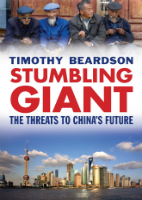
Stumbling Giant
While dozens of recent books and articles have predicted the near-certainty of China’s rise to global supremacy, this book boldly counters such widely-held assumptions. Timothy Beardson brings to light the daunting array of challenges that today confront China, as well as the inadequacy of the policy responses. Threats to China come on many fronts, Beardson shows, and by their number and sheer weight these problems will thwart any ambition to become the world’s “Number One Power.”Drawing on extensive research and experience living and working in Asia over the last 35 years, the author spells out China’s situation: an inexorable demographic future of a shrinking labor force, relentless aging, extreme gender disparity, and even a falling population. Also, the nation faces social instability, a devastated environment, a predominantly low-tech economy with inadequate innovation, the absence of an effective welfare safety net, an ossified governance structure, and radical Islam lurking at the borders. Beardson’s nuanced, first-hand look at China acknowledges its historic achievements while tempering predictions of its imminent hegemony with a no-nonsense dose of reality. —Yale University Press
Books
05.03.13
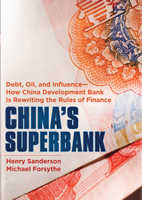
China’s Superbank
Anyone wanting a primer on the secret of China’s economic success need look no further than China Development Bank (CDB)—which has displaced the World Bank as the world’s biggest development bank, lending billions to countries around the globe to further Chinese policy goals. In China’s Superbank, Bloomberg authors Michael Forsythe and Henry Sanderson outline how the bank is at the center of China’s domestic economic growth and how it is helping to expand China’s influence in strategically important overseas markets.100 percent owned by the Chinese government, the CDB holds the key to understanding the inner workings of China’s state-led economic development model, and its most glaring flaws. The bank is at the center of the country’s efforts to build a world-class network of highways, railroads, and power grids, pioneering a lending scheme to local governments that threatens to spawn trillions of yuan in bad loans. It is doling out credit lines by the billions to Chinese solar and wind power makers, threatening to bury global competitors with a flood of cheap products. Another $45 billion in credit has been given to the country’s two biggest telecom equipment makers who are using the money to win contracts around the globe, helping fulfill the goal of China’s leaders for its leading companies to “go global.”Bringing the story of China Development Bank to life by crisscrossing China to investigate the quality of its loans, China’s Superbank travels the globe, from Africa, where its China-Africa fund is displacing Western lenders in a battle for influence, to the oil fields of Venezuela. As China’s influence continues to grow around the world, many people are asking how far it will extend. China’s Superbank addresses these vital questions, looking at the institution at the heart of this growth. —Bloomberg Press
Sinica Podcast
12.14.12
China 3.0
from Sinica Podcast
Today on Sinica, join us for a discussion on economics, politics, and geopolitics with Mark Leonard from the European Council on Foreign Relations. Our specific focus is China 3.0, the council’s recent compendium of essays on contemporary Chinese...
Books
10.18.12
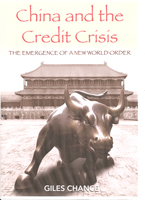
China and the Credit Crisis
China’s arrival on the world scene in the 1990s was the largest part of globalization. It brought many benefits worldwide: lower prices to Western consumers, large profits to multinationals, huge windfalls to commodity-rich countries, and employment and strong export growth to China. China’s emergence as a major global supplier and trader helped to create a boom which brought global growth with lower inflation and, for a time, an illusory stability, and also made China into the largest financer of the developed world.But Western politicians, regulators and bankers, their vision limited by national boundaries, did not understand at the time the true causes of the global economic boom of the Millennium. They attributed it largely to a revolution in risk management and their own wise policies. China and the Credit Crisis argues that if the role played in the new prosperity by globalization and an emerging China had been better understood, more appropriate policies and actions may have been adopted by central bankers and regulators which could have avoided the financial crash in 2008, or at least greatly limited its impact.China and the Credit Crisis goes on to examine the larger role that China will continue to play in a post-crisis world.
Sinica Podcast
10.12.12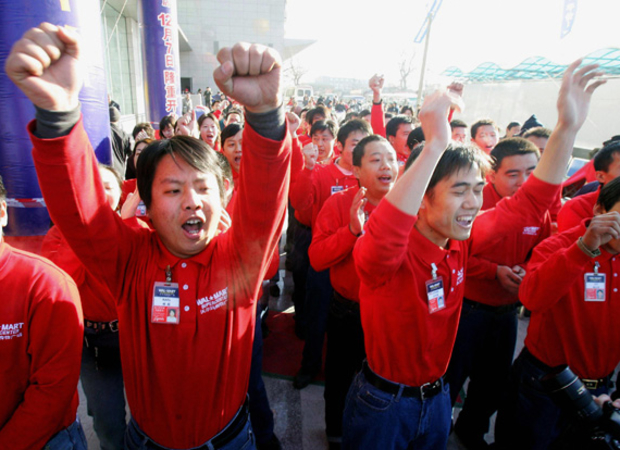
No Ancient Wisdom, No Followers
from Sinica Podcast
As China continues to subsidize inefficient state enterprises on a massive scale, an increasing number of critics—domestic and foreign—are questioning whether current policies mark a rejection or corruption of the vision championed by reformers like...
Books
07.26.12
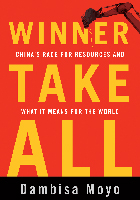
Winner Take All
Commodities permeate virtually every aspect of modern daily living, but for all their importance—their breadth, their depth, their intricacies, and their central role in daily life—few people who are not economists or traders know how commodity markets work. Almost every day, newspaper headlines and media commentators scream warnings of impending doom—shortages of arable land, clashes over water, and political conflict as global demand for fossil fuels outstrips supply. The picture is bleak, but our grasp of the details and the macro shifts in commodities markets remain blurry.Winner Take All is about the commodity dynamics that the world will face over the next several decades. In particular, it is about the implications of China’s rush for resources across all regions of the world. The scale of China’s resource campaign for hard commodities (metals and minerals) and soft commodities (timber and food) is among the largest in history. To be sure, China is not the first country to launch a global crusade to secure resources. From Britain’s transcontinental operations dating back to the end of the 16th century, to the rise of modern European and American transnational corporations between the mid 1860’s and 1870’s, the industrial revolution that powered these economies created a voracious demand for raw materials and created the need to go far beyond their native countries.So too is China’s resource rush today. Although still in its early stages, already the breadth of China’s operation is awesome, and seemingly unstoppable. China’s global charge for commodities is a story of China’s quest to secure its claims on resource assets, and to guarantee the flow of inputs needed to continue to drive economic development. —Basic Books
Books
05.21.12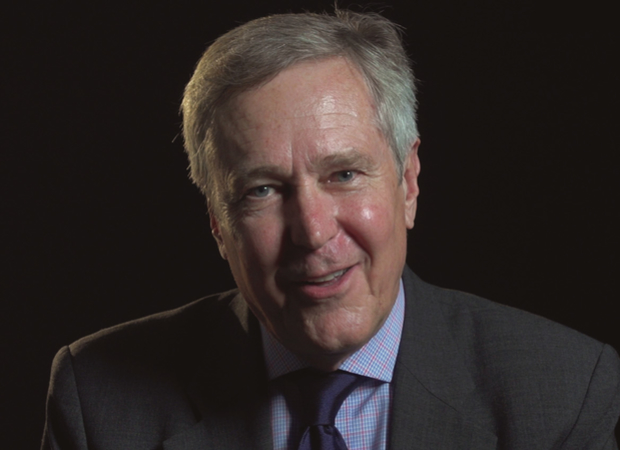
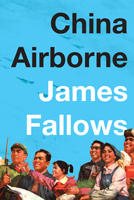
China Airborne
More than two-thirds of the new airports under construction today are being built in China. Chinese airlines expect to triple their fleet size over the next decade and will account for the fastest-growing market for Boeing and Airbus. But the Chinese are determined to be more than customers. In 2011, China announced its Twelfth Five-Year Plan, which included the commitment to spend a quarter of a trillion dollars to jump-start its aerospace industry. Its goal is to produce the Boeings and Airbuses of the future. Toward that end, it acquired two American companies: Cirrus Aviation, maker of the world’s most popular small propeller plane, and Teledyne Continental, which produces the engines for Cirrus and other small aircraft.In China Airborne, James Fallows documents, for the first time, the extraordinary scale of this project and explains why it is a crucial test case for China’s hopes for modernization and innovation in other industries. He makes clear how it stands to catalyze the nation’s hyper-growth and hyper-urbanization, revolutionizing China in ways analogous to the building of America’s transcontinental railroad in the nineteenth century. Fallows chronicles life in the city of Xi’an, home to more than 250,000 aerospace engineers and assembly workers, and introduces us to some of the hucksters, visionaries, entrepreneurs, and dreamers who seek to benefit from China’s pursuit of aerospace supremacy. He concludes by examining what this latest demonstration of Chinese ambition means for the United States and the rest of the world—and the right ways to understand it. —Pantheon Books
Books
03.28.12
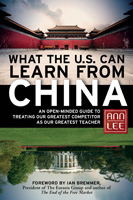
What the U.S. Can Learn from China
Mainstream media and the U.S. government regularly target China as a threat. Rather than viewing China’s power, influence, and contributions to the global economy in a negative light, Ann Lee asks: What can America learn from its competition? Why did China suffer so little from the global economic meltdown? What accounts for China’s extraordinary growth, despite one of the highest corporate tax rates in the world? How does the Chinese political system avoid partisan rancor but achieve genuine public accountability? From education to governance to foreign aid, Lee details the policies and practices that have made China a global power and then isolates the ways the United States can use China’s enduring principles to foster much-needed change at home.This is no whitewash. Lee is fully aware of China’s shortcomings, particularly in the area of human rights. She has relatives who suffered during the Cultural Revolution. But by overemphasizing our differences with China, the United States stands to miss a vital opportunity. Filled with sharp insights and thorough research, What the U.S. Can Learn from China is Lee’s rallying cry for a new approach at a time when learning from one another is the key to surviving and thriving. —Berrett-Koehler
Reports
09.30.11
China-U.S. Trade Issues
Peony Lui
Congressional Research Service
U.S.-China economic ties have expanded substantially over the past three decades. Total U.S.-China trade rose from $2 billion in 1979 to $457 billion in 2010. Because U.S. imports from China have risen much more rapidly than U.S. exports to China,...
Reports
09.28.11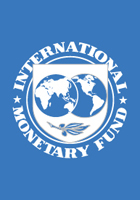
Hong Kong’s Recovery from the Global Financial Crisis
International Monetary Fund (IMF)
Hong Kong’s economy was severely affected by the global financial crisis (through both trade and financial channels). A recovery is now underway, fueled by growth on the Mainland, supportive policies, and accommodative monetary conditions imported...
Reports
07.27.11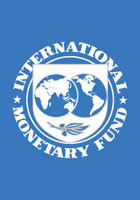
China’s Macroeconomic Rebalancing
International Monetary Fund (IMF)
In May and June 2011, an International Monetary Fund staff team held discussions in Chengdu, Shanghai, and Beijing, which this report documents. The consultation examined China’s macroeconomic outlook, the potential for a property price bubble, the...
Reports
04.01.11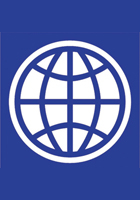
Diagnosing Development Bottlenecks: China and India
World Bank
Although it had a a lower income level than India in 1980, China’s 2006 per capita gross domestic product stood more than twice that of India’s. This paper investigates the role of the business environment in explaining China’s...
Reports
11.05.10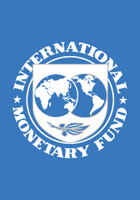
Staff Report of the People’s Republic of China—Hong Kong Special Administrative Region: 2010 Article IV Consultation Discussions
International Monetary Fund (IMF)
Two potent forces continue to influence Hong Kong SAR’s prospects: the unprecedented monetary policy easing in the United States and the solid domestic recovery, in part driven by spillovers from the Mainland. While the substantial expansion of...
Reports
11.01.10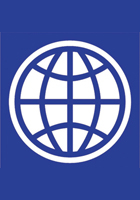
Did Higher Inequality Impede Growth in Rural China?
World Bank
Since the start of economic reform in the early 1980s, China has experienced plenty of growth and inequality; per capita income has grown nearly 8 percent annually, while the Gini coefficient rose from 0.28 to 0.39. Using a rich longitudinal survey...
The NYRB China Archive
09.30.10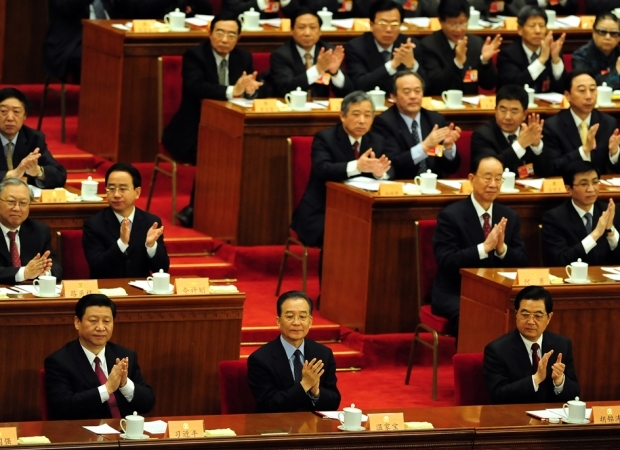
The Party: Impenetrable, All Powerful
from New York Review of Books
In the next few weeks, an event will take place in Beijing on a par with anything dreamed up by a conspiracy theorist. A group of roughly three hundred men and women will meet at an undisclosed time and location to set policies for a sixth of...
Reports
07.01.10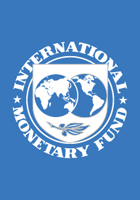
People’s Republic of China: 2010 Article IV Consultation-Staff Report; Staff Statement; Public Information Notice on the Executive Board Discussion
International Monetary Fund (IMF)
This is the staff report for the 2010 Article IV consultation, prepared by a staff team of the IMF, following discussions that ended on July 1, 2010, with the officials of the People’s Republic of China on economic developments and policies...
Reports
05.04.10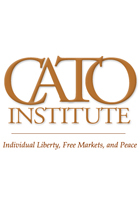
Manufacturing Discord
Cato Institute
Frictions in the U.S.-China relationship are nothing new, but they have intensified in recent months. This paper examines the U.S.-China economic relationship and some of its high-profile sources of friction, distills the substance from the hype,...
Reports
02.04.10
The 2009 Asia Pacific Economic Cooperation (APEC) Meetings and U.S. Trade Policy in Asia
Peony Lui
Congressional Research Service
Congress and the Executive Branch have historically identified the Asia Pacific Economic Cooperation forum (APEC) as potentially important in the promotion of liberalized international trade and investment in Asia, and possibly the rest of the world...
Reports
12.11.09
China’s Economic Conditions
Peony Lui
Congressional Research Service
Since the initiation of economic reforms and trade liberalization thirty years ago, China has been one of the world’s fastest-growing economies and has emerged as a major economic and trade power. The combination of large trade surpluses, FDI flows...
Reports
09.01.09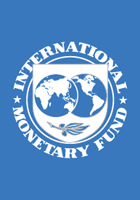
What’s the Damage? Medium-term Output Dynamics After Banking Crises
International Monetary Fund (IMF)
This paper investigates the medium-term behavior of output following banking crises, and its association with pre- and post-crisis conditions and policies. The authors find that output tends to be depressed substantially following banking crises,...
Reports
03.31.09
Asia Pacfic Economic Cooperation (APEC) and the 2008 Meetings in Lima, Peru
Peony Lui
Congressional Research Service
Congress and the Executive Branch have historically identified the Asia Pacific Economic Cooperation (APEC) as an important organization to help promote the U.S. goal of liberalizing international trade and investment in Asia, and possibly the rest...
Reports
01.01.07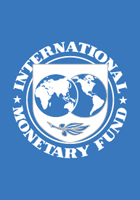
Das (Wasted) Kapital: Firm Ownership and Investment Efficiency in China
International Monetary Fund (IMF)
Based on a survey that covers a stratified random sample of 12,400 firms in 120 cities in China with firm-level accounting information for 2002-2004, the authors examine the presence of systematic distortions in capital allocation that result in...
Reports
10.20.05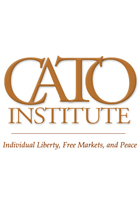
How China Should Use Its Foreign Reserves
Cato Institute
China’s labor-intensive economic growth over the last two decades allowed the transfer of a vast amount of low-wage labor from both the rural sector and the declining state-owned enterprise (SOE) sector. That allowed China to grow by “walking on two...
Reports
07.15.05
Hong Kong 2005: Changes in Leadership and Issues for Congress
Peony Lui
Congressional Research Service
The Hong Kong Special Administrative Region (HKSAR) has recently recovered from an economic downturn and the SARS virus outbreak of 2002-2003 which crippled trade and tourism. There has also been a major change in top government personnel, with the...
Reports
03.07.05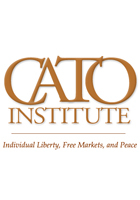
Nonmarket Nonsense: U.S. Antidumping Policy toward China
Cato Institute
In stark contrast to its broader restraint in the face of anti-China protectionist pressure, the Bush administration has adopted an unabashedly bellicose approach to antidumping matters. The administration should take a hard look at its antidumping...
Reports
05.20.04
China-U.S. Relations: Current Issues for the 108th Congress
Peony Lui
Congressional Research Service
During the George W. Bush Administration, U.S. and People’s Republic of China (PRC) foreign policy calculations have undergone several changes. The Bush Administration assumed office in January 2001 viewing China as a U.S. ”strategic competitor.”...
Reports
08.01.03
Asia Pacific Economic Cooperation (APEC), Free Trade, and the 2003 Summit in Bangkok, Thailand
Peony Lui
Congressional Research Service
On October 20-21, 2003, the Eleventh APEC Leader’s Meeting is to be held in Bangkok, Thailand. The theme for APEC 2003 is “A World of Differences: Partnership for the Future,” which is intended to bring together the best potential of all APEC...
Reports
10.17.02
Asia Pacific Economic Cooperation (APEC), FreeTrade, and the 2002 Summit in Mexico
Peony Lui
Congressional Research Service
On October 26-27, 2002, the Tenth APEC Leaders’ Meeting (summit) is to be hosted by Mexico in Las Cabos, Mexico. APEC 2002 is intended to send a clear message to the world that APEC has the ability to implement its initiatives while responding and...
Reports
10.26.01
Asia Pacific Economic Cooperation (APEC), Free Trade, and the 2001 Summit in Shanghai
Peony Lui
Congressional Research Service
On October 20-21, 2001, the Ninth APEC Leaders’ Meeting (summit) was hosted by China in Shanghai. The theme for APEC 2001 was “Meeting New Challenges in the New Century: Achieving Common Prosperity through Participation and Cooperation” with the sub...



